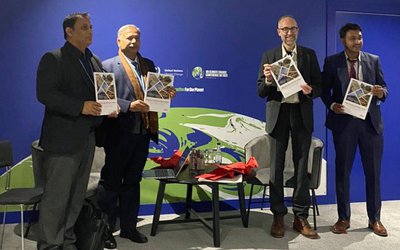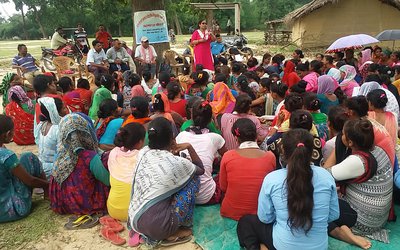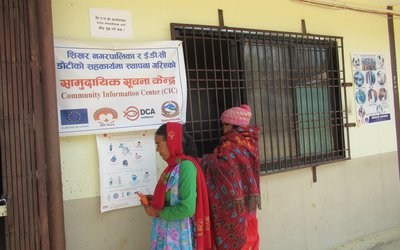
UN agencies warn on the state of malnutrition across the world’s hungriest region and call for nutrition to be placed at the heart of social protection programmes
Three million undernourished people in Asia and the Pacific must be lifted out of hunger each month from now on, if the region is to meet the SDG 2 Zero Hunger goal by the end of 2030, says a new report released today by four United Nations agencies.
With nearly half-a-billion of the world’s undernourished people living in Asia-Pacific – and with the 2030 deadline for Zero Hunger just a decade away –the Food and Agriculture Organization of the United Nations (FAO), the United Nations Children’s Fund (UNICEF), World Food Programme (WFP) and the World Health Organization (WHO) are calling for urgent actions to address hunger and malnutrition in all its forms, and, for the first time in this region, to take decisive, informed and coordinated action to place nutrition at the heart of social protection programmes.
The report’s latest figures relating to hunger, including micronutrient deficiencies also known as hidden hunger, child stunting and wasting make for grim reading amid the emerging nutritional complications brought forward by a crisis of overweight and obesity also sweeping the region.
“The prevalence of stunting and wasting in the region remains high, with stunting rates exceeding 20 percent in a majority of the region’s countries. An estimated 77.2 million children under five years of age were stunted in 2018, and 32.5 million suffered from wasting.”
Meantime, overweight and obesity are also rising among both children and adults in Asia-Pacific, negatively affecting health and well-being. The resultant burden of diet-related non-communicable diseases like diabetes, high blood pressure and respiratory problems, is placing great strain on national healthcare budgets and causing productivity losses.
“In many countries in the region, child undernutrition, overweight, obesity and micronutrient deficiencies are converging at the national level, in individual households, and even, in some cases, in the same person. A multi-stakeholder approach is needed to address the multiple burdens of malnutrition,” the reports states.
Social protection is an important way to help reduce inequality and mitigate the impacts of disasters, the report notes, and a special section on social protection explains that making programmes nutrition-sensitive can accelerate progress in eradicating hunger and malnutrition. It finds that such specific nutrition principles should be applied to the design, implementation, monitoring and evaluation of social protection programmes, both in normal times and in the face of shocks.
The report also acknowledges that some progress has been made in the region to improve food security and nutrition.
“Some of these developments – such as national legislation on food fortification and the implementation of fiscal policies to promote healthy diets – could prove beneficial. Continued economic growth also has the potential to improve food security and nutrition,” the regional heads of the four UN agencies jointly state. “Nevertheless, growing inequality undermines such positive developments, as do climate and conflict-related shocks and disasters.”
Although social protection has great potential to help in eradicating hunger and malnutrition, the report notes the need for more research into the impacts of social protection programmes on the health and nutrition of the poor, especially women and children, people with disabilities, and indigenous people.
The UN agencies behind the report hope that these findings will inform dialogues leading to innovative and effective actions in member countries to improve food security and nutrition across Asia and the Pacific.
Credit: FAO Regional Office Bangkok
Allan Dow
FAO Regional Communication Officer (Asia-Pacific)
- Asia-Pacific Revenues And Livelihoods Threatened
- Oct 17, 2019
















